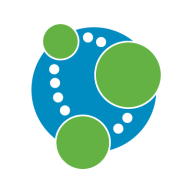

MongoDB Atlas and Neo4j AuraDB are both database solutions, each excelling in different areas. MongoDB Atlas is particularly strong in scalability and overall versatility, while Neo4j AuraDB shines in handling complex relationships with its graph data model.
Features: MongoDB Atlas offers horizontal scaling, flexible schema, and robust querying capabilities. Neo4j AuraDB provides native graph storage, efficient graph algorithms, and strong graph insights and analytics capabilities.
Room for Improvement: MongoDB Atlas could improve in implementing more advanced graph capabilities and real-time data integration. Enhanced multi-model support would be beneficial. Neo4j AuraDB may benefit from better integration with non-graph frameworks, streamlined deployment options, and enhanced support for large-scale data environments.
Ease of Deployment and Customer Service: MongoDB Atlas is known for its seamless deployment and extensive cloud provider integrations, along with comprehensive support and documentation. Neo4j AuraDB provides an easy setup specifically for graph applications, with dedicated guidance for graph use cases.
Pricing and ROI: MongoDB Atlas offers a pay-as-you-go model that aligns with its scalability, offering cost-effectiveness for various businesses. Neo4j AuraDB, while potentially having higher initial costs, offers substantial ROI for those focused on detailed relational insights.
| Product | Market Share (%) |
|---|---|
| MongoDB Atlas | 10.5% |
| Neo4j AuraDB | 5.2% |
| Other | 84.3% |


| Company Size | Count |
|---|---|
| Small Business | 22 |
| Midsize Enterprise | 10 |
| Large Enterprise | 20 |
| Company Size | Count |
|---|---|
| Small Business | 4 |
| Midsize Enterprise | 2 |
| Large Enterprise | 1 |
MongoDB Atlas stands out with its schemaless architecture, scalability, and user-friendly design. It simplifies data management with automatic scaling and seamless integration, providing dynamic solutions for diverse industries.
MongoDB Atlas offers a cloud-based platform valued for its seamless integration capabilities and high-performance data visualization. It features advanced security options such as encryption and role-based access control alongside flexible data storage and efficient indexing. Users benefit from its robust API support and the ability to manage the platform without an extensive setup process. Feedback suggests improvements are needed in usability, query performance, security options, and third-party tool compatibility. While pricing and support services could be more economical, there is a demand for enhanced real-time monitoring and comprehensive dashboards, as well as advanced containerization and scalability options supporting complex database structures.
What are the key features of MongoDB Atlas?
What benefits should you consider in a solution like MongoDB Atlas?
In healthcare and finance, MongoDB Atlas manages payment transactions and facilitates real-time analytics, powering SaaS solutions and storing large volumes of user data. It enhances scalability, performance, and security for cloud hosting, IoT integrations, and Node.js environments, widely favored for its flexibility and capability to support microservices.
Neo4j AuraDB offers seamless integration with Python, Java, and Go, efficiently handles real-time data, and is hosted on AWS Cloud for reliable, scalable, and multi-cloud support across GCP, Azure, and Amazon.
Neo4j AuraDB is appreciated for its flexible data models and dedicated query language, ideal for network correlation and graph analysis. It provides scalability with expanded memory and supports multiple databases. While users enjoy its speed and AI data handling capabilities, challenges include stability, with occasional crashes and a need for a more intuitive cloud interface. Enhancements in simplifying the development process and improving the Bloom interface for large datasets are desired. Although documentation is positive, it could be streamlined. Scalability in large projects is a recurring concern alongside a more user-friendly setup for less experienced teams.
What are Neo4j AuraDB's standout features?Research teams use Neo4j AuraDB to learn cipher language and gather data from platforms like Hacker News. It is vital for graph data access, participant engagement, and projects like connecting food data or investment insights. Companies needing scalable cloud interfaces and swift data analysis in generative AI contexts benefit significantly, achieving effective data point connection with robust documentation.
We monitor all Managed NoSQL Databases reviews to prevent fraudulent reviews and keep review quality high. We do not post reviews by company employees or direct competitors. We validate each review for authenticity via cross-reference with LinkedIn, and personal follow-up with the reviewer when necessary.